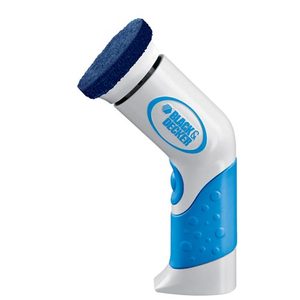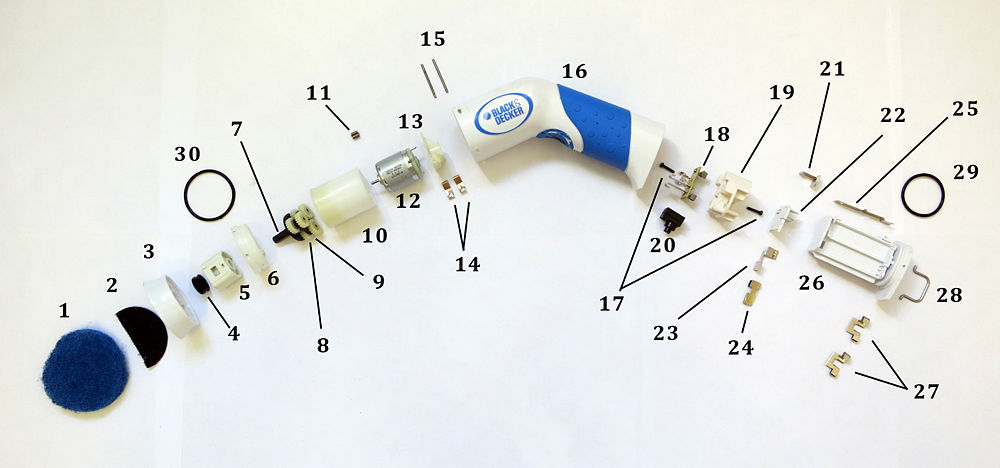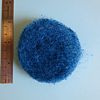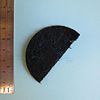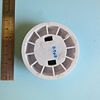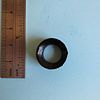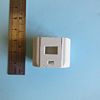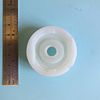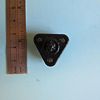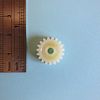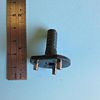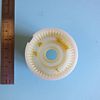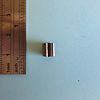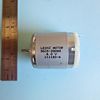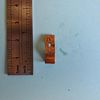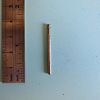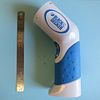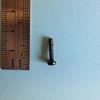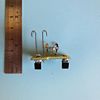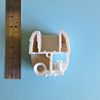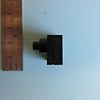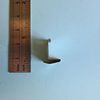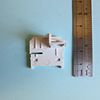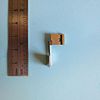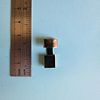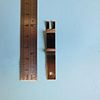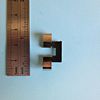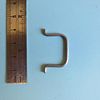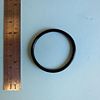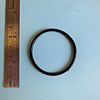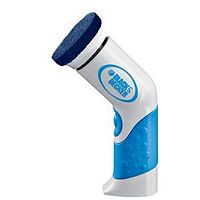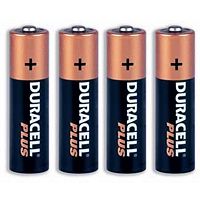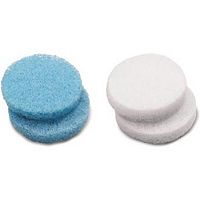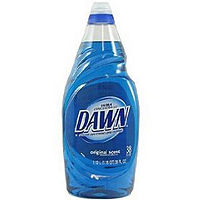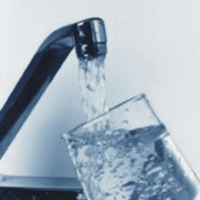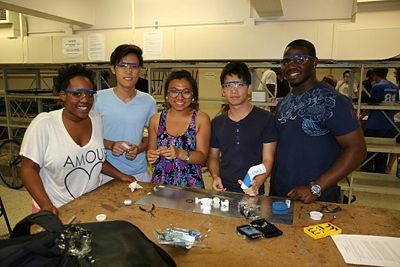Power scrubber
From DDL Wiki
Contents |
Exectuve Summary
Major Product Stakeholder Analysis
We identified four major categories of stakeholders for our product. They are manufacturers, shipping & transportation companies, retailers, and consumers.
Stakeholder Objectives
- Manufacturers
Low cost raw materials Simple manufacturing process required for materials chosen -- easy for mass production Energy efficient manufacturing process Recyclable materials Easy assembly Low cost packaging
- Shipping & transportation companies
Firmly packaged Light weight packaging Space efficient mass packaging
- Retailers
Appearance Cost Marketability (consumer needs) Durability
| Stakeholder Needs and Wants | ||
|---|---|---|
| Stakeholder | Needs | Wants |
| Consumer |
|
|
| Retailer |
| |
| Manufacturer |
|
|
| Shipping & Transportation |
|
|
Product User Study
Mechanical Function
Parts List
| Part Number | Name | Quantity | Mass (g) | Subassembly | Function | Material | Manufacturing Process | Image |
|---|---|---|---|---|---|---|---|---|
| 1 | Sponge | 1 | ||||||
| 2 | Velcro | 1 | ||||||
| 3 | Device Head | 1 | ABS | |||||
| 4 | Rubber Ring #1 | 1 | Rubber | |||||
| 5 | Connector | 1 | ABS | |||||
| 6 | Gear Cover | 1 | ABS | |||||
| 7 | Planetary Gear #1 | 1 | ||||||
| 8 | Planetary Gear #2 | 6 | ABS | |||||
| 9 | Planetary Gear #3 | 1 | ||||||
| 10 | Gear Housing | 1 | ABS | |||||
| 11 | Gear on Motor | 1 | ||||||
| 12 | Motor | 1 | ||||||
| 13 | Motor Housing | 1 | ABS | |||||
| 14 | Conductor #1 | 2 | Copper | |||||
| 15 | Pin | 2 | ||||||
| 16 | Outer Shell | 1 | ABS, Rubber | |||||
| 17 | Screw | 2 | ||||||
| 18 | Circuit Board | 1 | ||||||
| 19 | Circuit Board Housing | 1 | ABS | |||||
| 20 | Button | 1 | ||||||
| 21 | Conductor #2 | 1 | ||||||
| 22 | Battery Housing #1 | 1 | ABS | |||||
| 23 | Conductor #3 | 1 | ||||||
| 24 | Conductor #4 | 1 | ||||||
| 25 | Clicker | 1 | ||||||
| 26 | Battery Housing #2 | 1 | ABS | |||||
| 27 | Conductor #5 | 2 | ||||||
| 28 | Handle | 1 | ||||||
| 29 | Rubber Ring #2 | 1 | Rubber | |||||
| 30 | Rubber Ring #3 | 1 | Rubber |
Design For Manufacturing and Assembly
DFM
The product uses standardized components for many of the components such as the screws, motor, and Velcro, etc. For the ease of manufacturing, all the conducting metal pieces have similar dimensions; this means that fewer tools and setups are required during the manufacturing process. Most of the other customized parts are made of the same material, ABS, which are easy to work with using injection molding for mass production. Furthermore, since injection moldings are used for the ABS parts, not many finishing operations are needed to reduce further cost. The product uses the rubber rings as a multifunctional part what work as a seal for water proof as well as a locking mechanism for holding parts together. The rubber rings also help avoid tight tolerances based on its flexibility, which result in cost reduction. For the outer shell, special process of injecting two materials, rubber and ABS, are used to eliminate extra works for assembly.
The product is composed of many small pieces in the interior of the device that could possibly be designed with fewer pieces. Also, although injecting molding can account for irregular shape, those small pieces can be modified into simpler shapes without losing their functionalities. The battery holder can be considered to be bought off the shelf and integrate with the product with minor design changes. The product uses soldering for connecting the motor to the conducting metals; however, it might be less cost and time consuming if the conducting piece can be redesign to secure the connection.
DFA
Failure Mode and Effect Analysis
| Item and Function | Failure Mode | Effects of Failure | S | Causes of Failure | O | Design Controls | D | RPN | Recommended Actions |
|---|---|---|---|---|---|---|---|---|---|
| Battery Housing | Battery housing comes loose | No Power Source | 4 | Not closing properly | 4 | Scrubber would not turn on | 2 | 32 | A better clicking mechanism |
| Button: ON/OFF | Button sticks | Can't turn on or can't turn off | 4 | Alignment of button | 2 | Scrubber would not turn on | 1 | 8 | Make it a flip switch |
| Outter Shell | Cracking | No longer water proof | 4 | Dropping, crushing, overheating | 5 | Scrubber would not turn on | 2 | 40 | Coat entire body with rubber |
| Rubber gripping/waterproofing | Melts or wear and tear | No longer waterproof | 3 | Heat | 2 | Scrubber would not turn on | 3 | 18 | Better material choice |
| Motor-circuit board connection | Welding of copper loosens | Motor does not run | 4 | Fatigue, Overheating | 1 | Scrubber would not turn on | 3 | 18 | Better mesh of the motor with the circuit board |
Design For Environment
| Production | Use | Use | Use | Use | |
|---|---|---|---|---|---|
| Item purchased | Power Scrubber Manufacturing | Battery | Sponge | Soap | Water |
| a) Picture | |||||
| b) Economic Sector Name and # | Small Electric appliance #335210 | Primary battery manufacturing #335912 | Broom, brush, and mop manufacturing #339994 | Soap and cleaning compound manufacturing #325610 | Water, sewage and other systems #221300 |
| c) Reference Unit | 1 item | 4 batteries | 1 piece | 16 oz/bottle | 19.5 gallon/day |
The Team
Team Leader: Xin (Pam) Hu
DFMA Leader: Ken-Soh (Robert) Mai
FMEA Leader: Ben Antoine
DFE Leader: Kelle Patterson
User Study Leader: Shao-Chuan (Ted) Fang
